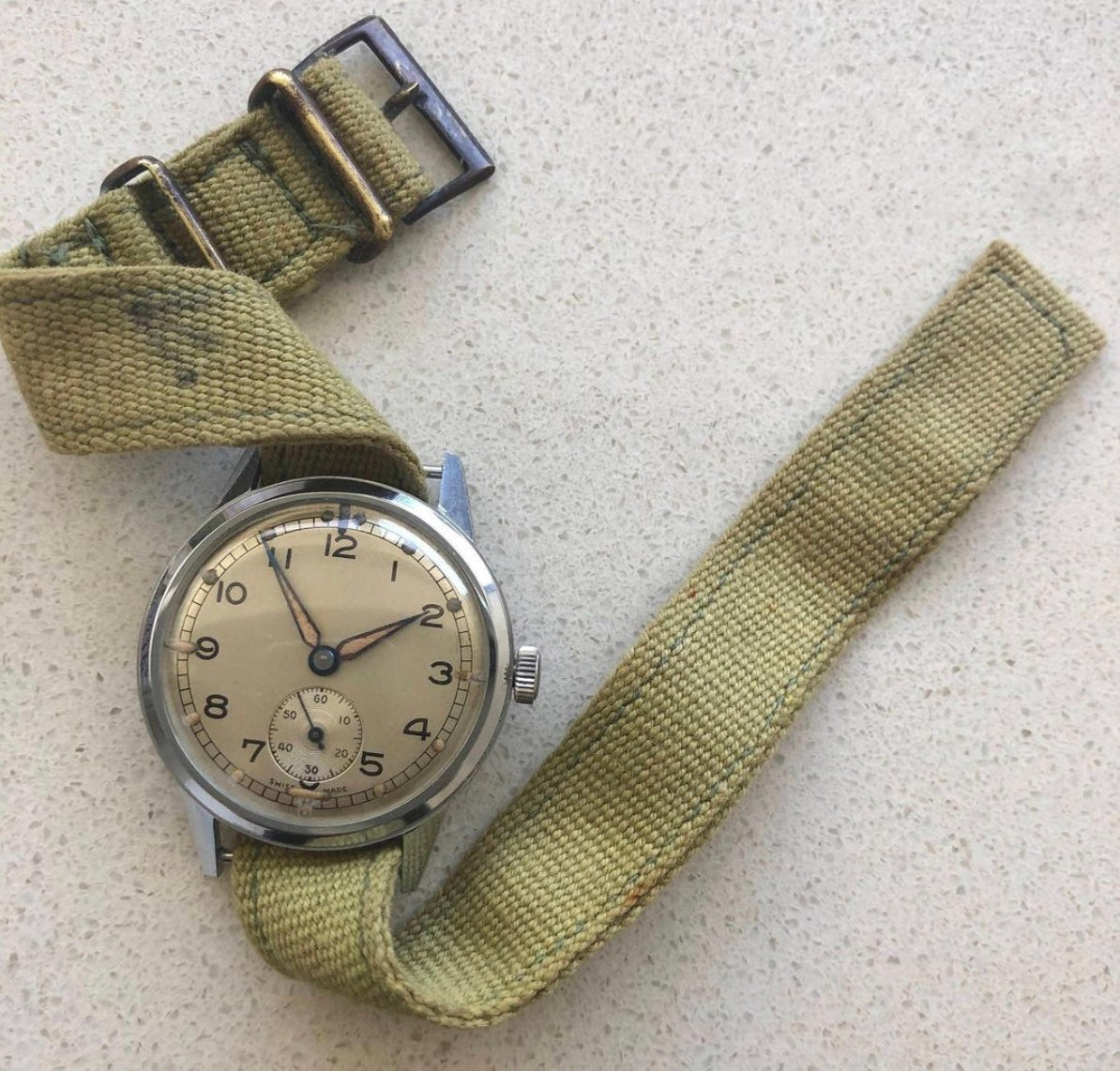History of the NATO Strap

Amongst the few types of straps one can choose from to secure their favorite timepiece to their wrist, one of them remains as ubiquitous as the Rolex Submariner: the NATO. In a recent article, I reviewed Everest Band’s Nylon straps, perhaps the best $30 you can spend on any piece of fabric strap as they are of high quality and superbly comfortable to wear. And while writing about the Everest Nylon straps, I realized I didn’t know much about this type of strap. It got me thinking: what’s the story behind them? What makes NATO straps so popular? So, in good Vincent fashion, let’s take a quick trip back to the 1940s to see how NATOs came to be and what makes them so popular today.

Source: www.af0210strap.com
Ancestors of the NATO Strap
While most articles relating to the history of the NATO date its debut back to 1973, two ancestors of the NATO can be identified as dating as early as the mid-1950s. According to AF0210, the 6B/2617 was the first NATO-style strap made available by the British Ministry of Defense in 1954 to be worn on IWC MK11 Navigator watches. Although it wasn’t called a NATO it had the exact same construction: two pieces of weaved cotton, one longer than the other—one sliding through the spring bars and the other threading through the first by way of a metal keeper. This strap also came in the “Admiralty Grey” color that made the NATO strap famous.
 Source: www.af0210strap.com
Source: www.af0210strap.com
But we can go even further back in history to 1945 when an even earlier ancestor of the NATO came to existence. Referred to as the “VB Hygienique” by AF0210, this strap was the first of its kind, as in it was the first to have the typical NATO construction (un-scientifically explained above) and it was made of stiffened cotton. (All straps back then were made of cotton.) Since watches were smaller in the 1940s, it came in only one lug width of 16mm and, just like the 6B/2617 and first official NATOs, could only be purchased at military stores.
 Source: www.af0210strap.com
Source: www.af0210strap.com
The First Official NATO Strap
Let’s now go to 1976 when the first so-called NATO came out. The story goes something like this: The British Ministry of Defense (once again) started issuing a strap for its armed forces that had the same construction as the aforementioned early ancestors of the NATO. (I will therefore not repeat it here.) The name “NATO” comes from “NATO Stocking Number” (NSN) which is a reference to how NATO forces used to list their supply items. It’s the commercial equivalent of a SKU number. So the name NATO is a short version of something that is not in itself indicative of anything.
Moreover, the MOD used to only produce one version of the strap: 20mm lug width and in Admiralty Grey. So the first version of the NATO is also referred to “G-10 Strap” because soldiers had to fill out a form called G1098 to request for a strap. Because humans are lazy, it was shortened to G10. Later, the military started issuing these watch straps, nicknamed NATOs in different colors to match that of each regiment’s colors. That’s why nowadays we can see nylon watch straps with many color variations, although it should be noted that Sean Connery’s James Bond did help in making ribbon like nylon watch band popular in the movie *Goldfinger*.
 Source: www.revolutionwatch.com
Source: www.revolutionwatch.com
NATO Straps in the 21st Century
What follows is more of a combination of anecdotal stories rather than an in-depth historical analysis of NATO straps. The latter is ever more popular nowadays because it has become accepted to wear bulkier, military-inspired straps instead of elegant Horween leather straps or a stainless steel bracelet. Nylon and Nato-like watch straps make any watch look more rugged and casual—something that I’ve come to appreciate too over the past year—and it is even not so rare now to see someone sport a Speedmaster on a colorful nylon strap, paired with a suit for a business meeting. Anything works and I’ve got to admit, it takes a certain type of person to sport a nylon with elegance.
With that said, NATOs are also easy to swap and they do keep a watch securely attached to the wrist. Two positive points that are hard too dismiss. As mentioned in the introduction, I reviewed the Everest Band Nylon straps and they offer the best bangs for the bucks.

Final Thoughts
Whether or not the history of the NATO strap dates back to 1945, 1954, or 1976, the simple truth is that these straps are extremely popular now and this for good reasons. They are rather inexpensive, easy to use, and practical. If you are like me and are concerned that a NATO would be too bulky, I suggest looking into single-pass NATO straps. They are easier to use (in my opinion) and more comfortable to wear especially when paired with smaller and lighter watches. (I tend to wear smaller watches.) At the end of the day, NATOs were the chosen strap for the military because of their unique benefits. So it is no wonder why they are so popular now.







Leave a comment